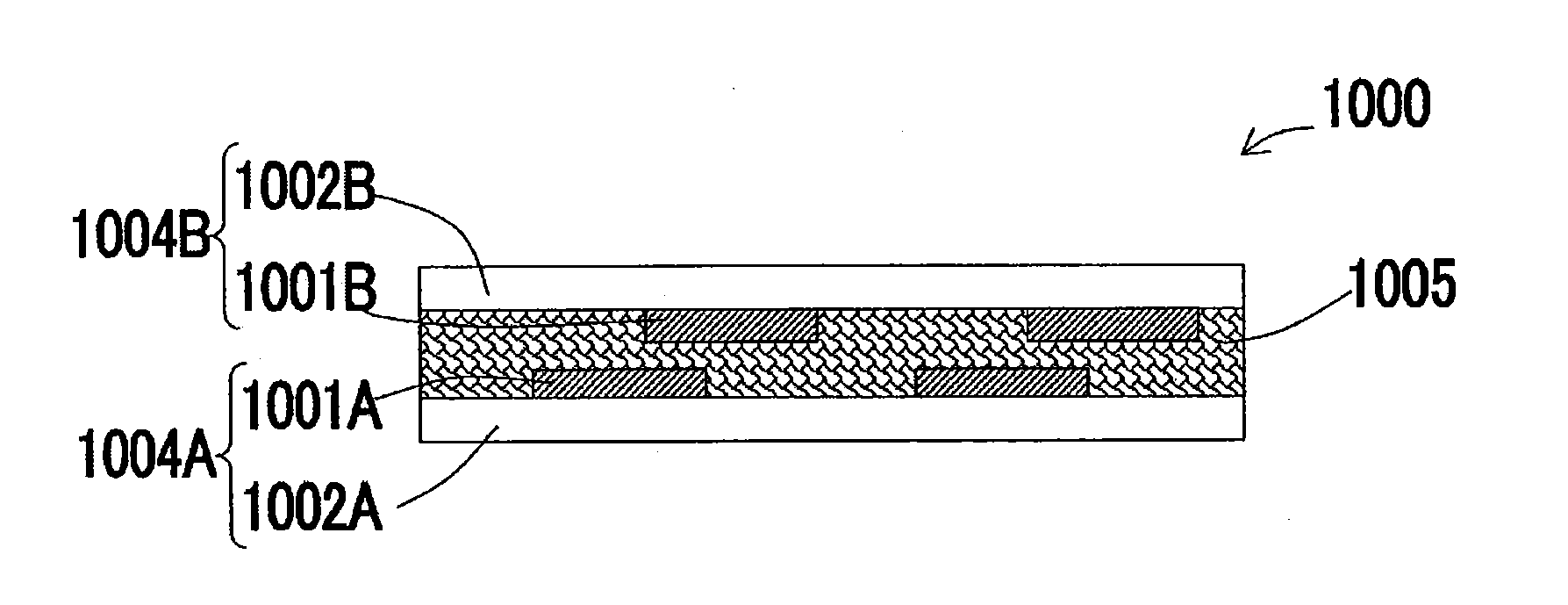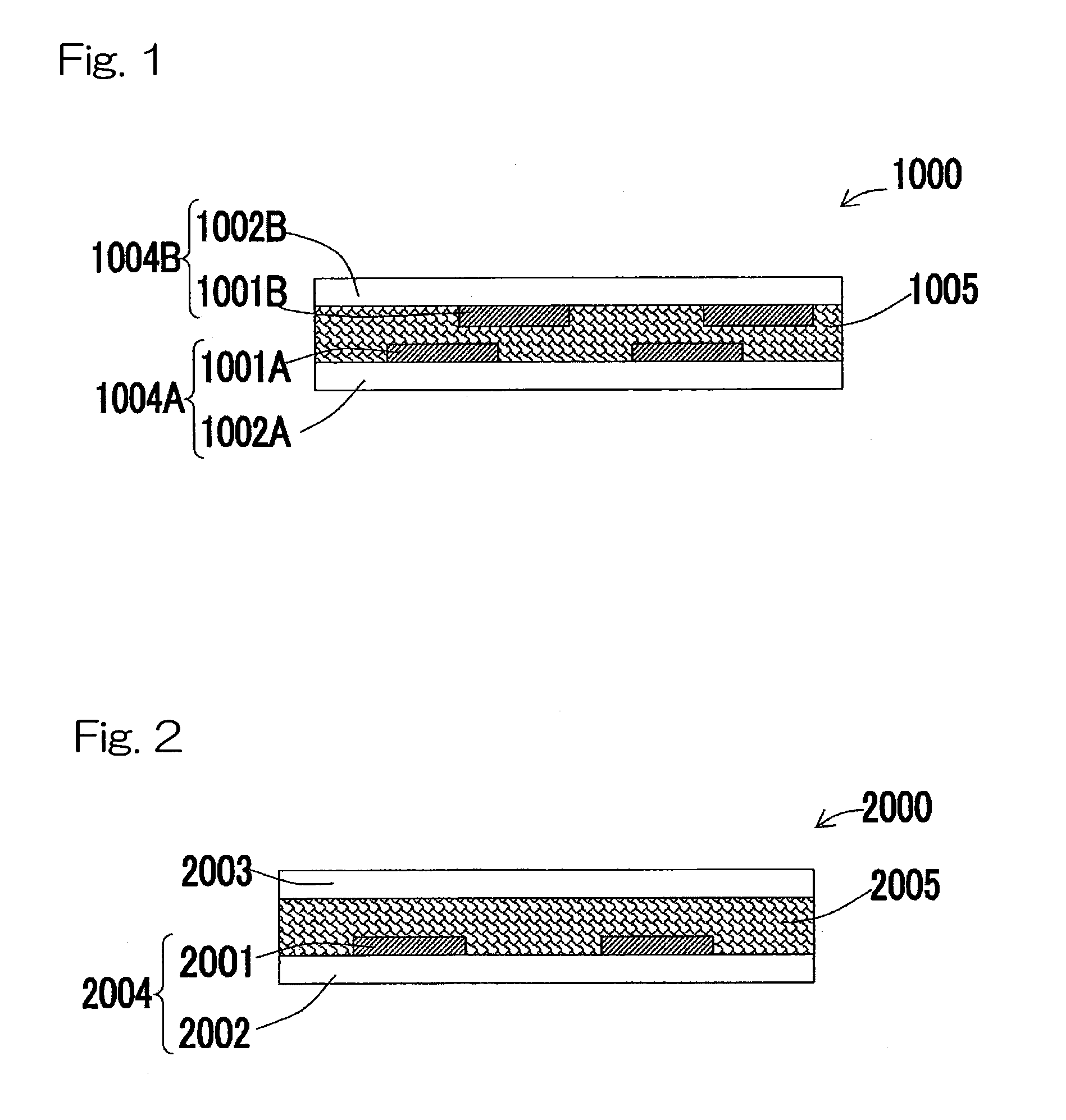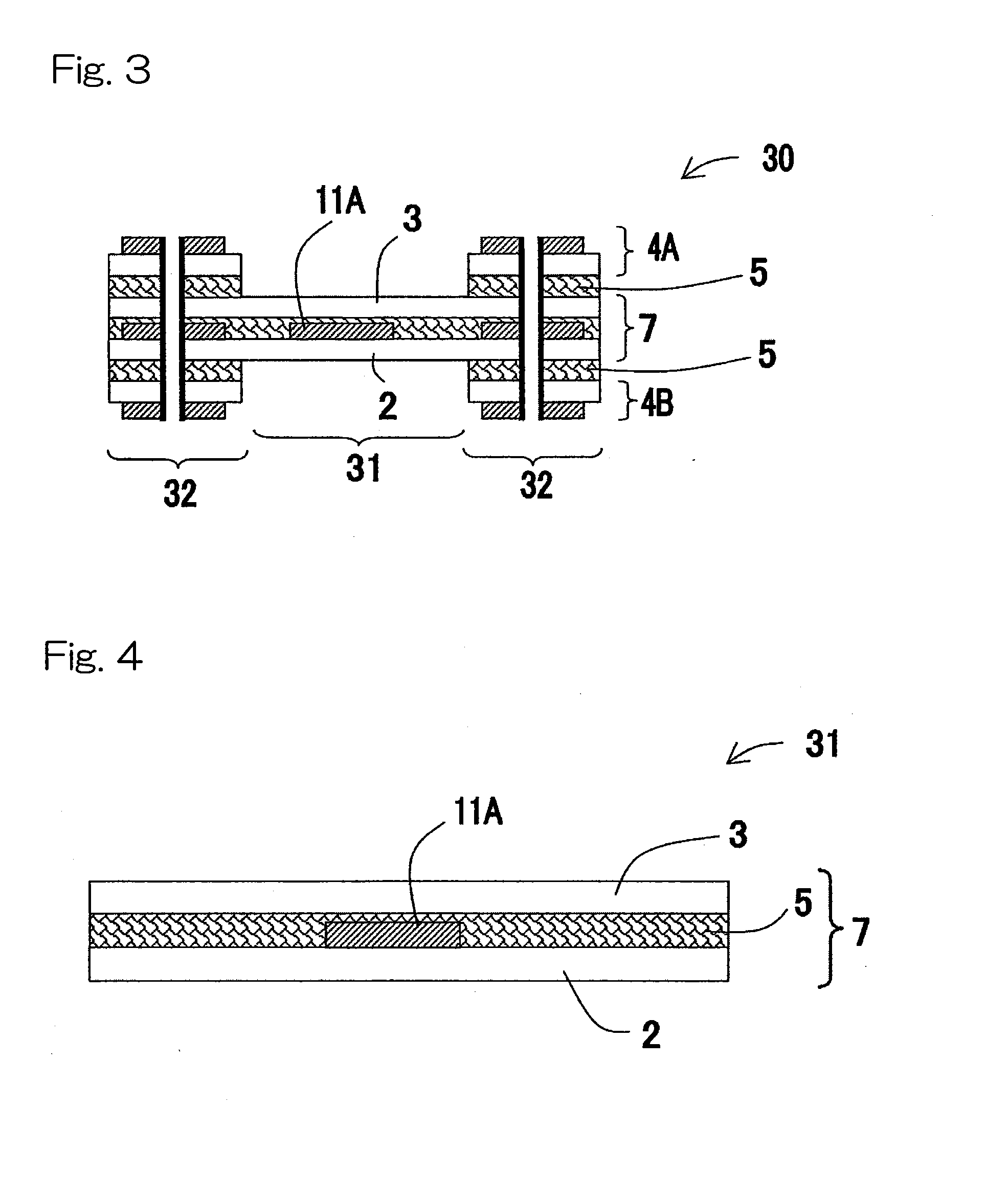Circuit board and method for manufacturing same
- Summary
- Abstract
- Description
- Claims
- Application Information
AI Technical Summary
Benefits of technology
Problems solved by technology
Method used
Image
Examples
application example 1
[0209]A rigid-flexible circuit board comprising a flexible part and a rigid part, wherein
[0210]the flexible part comprises a flexible circuit board comprising a film of a thermoplastic liquid crystal polymer capable of forming an optically anisotropic melt phase (hereinafter referred to as a thermoplastic liquid crystal polymer) as an insulating material;
[0211]the rigid part comprises a rigid circuit board comprising:[0212]one or more portions of the flexible circuit board, and[0213]one or more rigid circuit layers disposed to at least on one surface of the flexible circuit board portion(s), the rigid circuit layer(s) each comprising a rigid insulating substrate and one or more conductive parts on at least one surface of the rigid insulating substrate; and
[0214]an adhesive layer comprising a polyphenylene ether-based resin to provide adhesion between the thermoplastic liquid crystal polymer films and between the flexible circuit board portion and the rigid circuit layer.
application example 2
[0215]The rigid-flexible circuit board according to Application Example 1, wherein
[0216]the flexible part is formed of a flexible circuit board comprising:[0217]a flexible insulating substrate formed of a thermoplastic liquid crystal polymer film,[0218]one or more conductive parts disposed on at least one side of the flexible insulating substrate, and[0219]one or more coverlays formed of a thermoplastic liquid crystal polymer film and covering the conductive part(s);
[0220]the rigid part comprises a rigid circuit board comprising:[0221]one or more portions of the flexible circuit board, and[0222]one or more rigid circuit layers disposed to at least on one surface of the flexible circuit board portion(s), the rigid circuit layer(s) each comprising a rigid insulating substrate and one or more conductive part formed on at least one side of the rigid insulating substrate; and
[0223]the adhesive layer comprising a polyphenylene ether-based resin to provide adhesion between two members sele...
application example 3
[0224]The rigid-flexible circuit board according to Application Example 1 or 2, wherein the thermoplastic liquid crystal polymer has a melting point of 295° C. or higher, and the adhesive layer has a glass transition temperature of 200° C. or higher.
PUM
| Property | Measurement | Unit |
|---|---|---|
| Temperature | aaaaa | aaaaa |
| Temperature | aaaaa | aaaaa |
| Temperature | aaaaa | aaaaa |
Abstract
Description
Claims
Application Information
 Login to View More
Login to View More - R&D
- Intellectual Property
- Life Sciences
- Materials
- Tech Scout
- Unparalleled Data Quality
- Higher Quality Content
- 60% Fewer Hallucinations
Browse by: Latest US Patents, China's latest patents, Technical Efficacy Thesaurus, Application Domain, Technology Topic, Popular Technical Reports.
© 2025 PatSnap. All rights reserved.Legal|Privacy policy|Modern Slavery Act Transparency Statement|Sitemap|About US| Contact US: help@patsnap.com



